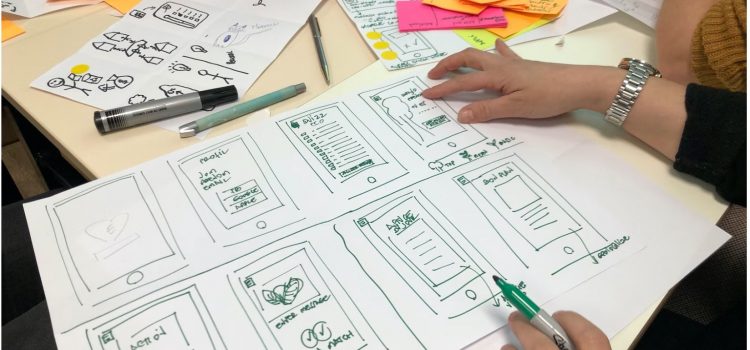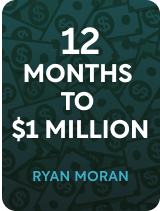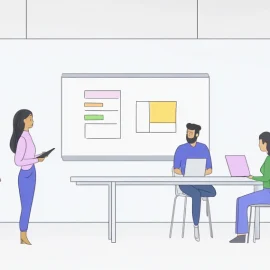

This article is an excerpt from the Shortform book guide to "12 Months to $1 Million" by Ryan Daniel Moran. Shortform has the world's best summaries and analyses of books you should be reading.
Like this article? Sign up for a free trial here.
Are you ready to make your first product? How do you develop a product idea?
The key to a successful business is selling a product that people want to buy. In 12 Months to $1 Million, Ryan Moran teaches you how to bring your product idea to life and sell it to a niche audience.
Learn how to develop a product idea that’ll convince consumers they need it.
Develop Your First Product
According to Moran, to learn how to develop a product idea, you must first identify the audience you want to sell to and then specially design a product that meets their wants or needs—it should solve a problem your specific niche audience has. Developing a product that speaks to a distinct group of people ensures you have something that people will be interested in buying and allows you to tailor your product to their needs better than other products that cater to everyone. This allows you to build a brand with unique value that will have loyal, repeat customers.
(Shortform note: This approach of targeting a specific market is the opposite of mass marketing, which involves using ads that appeal to everyone. In Purple Cow, Seth Godin writes that mass marketing is no longer effective because people these days have less time, money, and attention, and are largely overwhelmed by advertisements. Godin writes that when you sell something you know your audience wants, you attract passionate people who will not only buy your product but also spread the word about it.)
Choose a Product by Thinking About Your Audience
Moran provides several tips for creating a product by starting with your audience:
1. Identify your audience. To do this, Moran suggests you start by thinking about what communities you belong to or are familiar with. For example, if you enjoy hiking with your dog, you might focus on dog owners who enjoy doing outdoor activities with their dogs.
2. Find out what’s on their shopping list. Once you’ve decided who your audience is, list three to five products they typically buy. This can give you ideas for the product you want to create. You can find out what your audience typically buys by researching online shopping platforms, forums, and so on. For example, you might discover that outdoorsy dog owners buy GPS collars, leashes, bowls, and so on.
3. Decide what your first product will be. Select a product from your list that your audience typically purchases first—the first step to achieving their goals. Your first product should hook customers and make them interested in buying other products from you in the future. For example, you could decide to focus on GPS dog collars.
4. Research audience opinions. Once you’ve settled on your first product, research what opinions your audience has on similar products. What do they like, dislike, or wish was different about these products? Their opinions can clue you in as to what current products on the market aren’t offering that you can consider offering with your product. For example, you might discover complaints about GPS dog collars being faulty and too bulky.
5. Find a solution with your product. Once you’ve researched problems about similar products, use that information to come up with a product that addresses one of these problems for your specific audience. Moran writes that your product doesn’t need to be dramatically different from other products, it just needs to be tailored to your customer. For example, you might plan to create a collar with reliable GPS technology that’s slim and weatherproof.
6. Plan the other products in your line. Moran writes that your other products shouldn’t be add-ons, accessories, or variations of your first product, but new products that help them achieve the same goal your first product achieved. This ensures you’re creating a brand that will have long-term customers interested in buying more from you down the line. For example, other products that help your customer enjoy the outdoors with their dogs might be a cooling vest, a backpack, and a collapsible dog bowl.
Turn Your Idea Into a Product
Once you have an idea for a product that solves a problem for your target audience, the next step is turning it into reality. Start by finding a supplier who can manufacture your product. To figure out which supplier will best serve your needs, Moran suggests you contact several suppliers from Alibaba.com or similar sites and order ready-made samples from them of products similar to the one you’d like to offer. Then, modify those samples until you have the product you want.
According to Moran, refining ready-made samples is more efficient than asking suppliers to make a custom prototype based on your design. Ordering a custom prototype is far more time-consuming, and you’ll likely have to change your product design several times anyway.
To modify ready-made samples into the product you want to sell, you need to test them out and get feedback from your target audience. Once you do, you can ask your supplier to make the necessary changes. Moran suggests you keep refining your product as you go and don’t let perfectionism stop you from moving forward.
Once you have a product that’s ready to sell, order a small amount of inventory—for instance, 100 units to start. This allows you to start selling without risking too much money if there’s an issue or your product doesn’t sell well.
At this stage, Moran writes that it’s more important to stick with a supplier who can deliver your product on time and communicate with you effectively than to try to save money by switching around with different suppliers. The key to making a profit is to be able to stock your inventory when needed, which depends on having a reliable supplier.

———End of Preview———
Like what you just read? Read the rest of the world's best book summary and analysis of Ryan Daniel Moran's "12 Months to $1 Million" at Shortform.
Here's what you'll find in our full 12 Months to $1 Million summary:
- Why it's not only possible, but simple, to build a $1 million business in a year
- Proven techniques for creating breakthrough products
- How to decide whether to scale or sell your business






